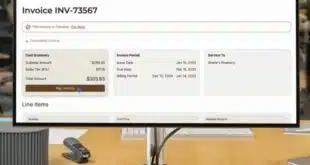The Oct. 1 onset of the EMV-inspired liability shift for fraudulent transactions represents a potential financial impact for retailers, and now with that date only days away, many of them have become eager to get their hands on EMV point-of-sale terminals.
Merchants could be on the hook for fees related to fraudulent transactions, potentially eroding their profits. Merchant acceptance of EMV chip cards is one part of the equation to enabling a more secure U.S. credit and debit card payment system. Issuers, which are sending millions of chip-enabled cards to consumers, and payment-processing providers form the other parts.
Now that Oct. 1 is around the corner, some merchants are in a hurry not only to receive but also activate their EMV POS terminals, says Marc Castrechini, vice president of product management at Cayan LLC, a Boston-based payments company. Others, which already have EMV-capable devices, lack the necessary certification to accept EMV transactions.
Cayan’s experience is not uncommon, says Adil Moussa, principal of Adil Consulting, an Omaha, Neb.-based firm.
“Some ISOs and acquirers are experiencing a rush to send the terminals,” Moussa says. “Merchants that have delayed the terminal replacement until the last minute, so that puts pressure on acquirers to meet that demand.”
Cayan developed plans to aid merchants in either situation. For those without an EMV terminal, Cayan works with a couple of distributors, and assigns in-house staff to ship additional devices.
For merchants that already have EMV terminals but lack certified payment apps, Cayan developed a swap program. That makes more sense in lieu of reprogramming, Castrechini says. For example, one popular POS terminal requires an update to its operating system for the certified EMV app to properly operate. That update takes between 30 minutes to 40 minutes to complete, he says. Plus, the merchant has to schedule the downtime for the POS terminal. The swap also means the merchant does not have to buy a replacement device.
In other instances, the certification for a processor’s app for one terminal manufacturer may not be ready, which might motivate some merchants to switch to a terminal manufacturer whose app is EMV-certified, Castrechini says. “Over the past year or two, [businesses] may have been pushed into EMV devices early, and have a device that is not yet certified by their acquirer,” he says.
“That suddenly gets into years of work, not days, weeks, or months,” Castrechini says. With the goal of making EMV acceptance as seamless as possible for merchants, Cayan developed the swap program as a way to get the merchant prepared much sooner than doing a terminal update. “We don’t want the merchant sitting around until the certified app comes along,” Castrechini says. Cayan then resells the equipment the merchant exchanged, once it’s been updated.
Castrechini expects the demand for EMV terminals won’t suddenly dissipate on Oct. 2. “We are anticipating this will be a long haul,” he says. “Because there’s so much confusion and risk in the United States, [businesses] are understanding the reality of the situation, but may not be ready for quite some months to come.”
And that’s OK, with Cayan, which figured the EMV migration would take years. “This is a continuous change over the next number of years,” Castrechini says.




